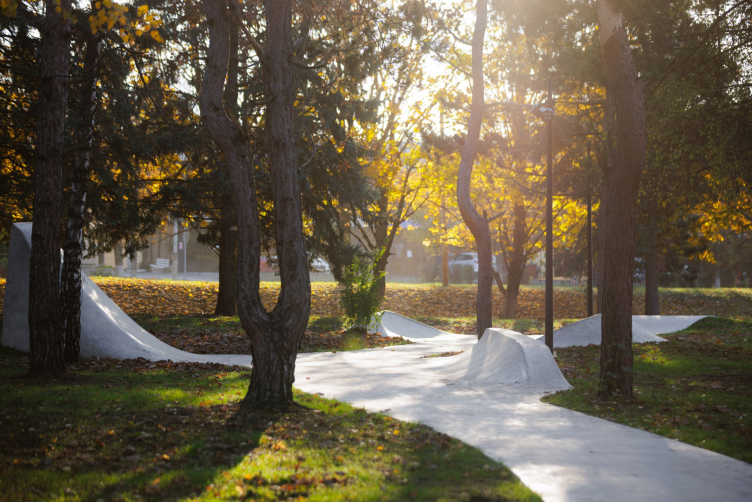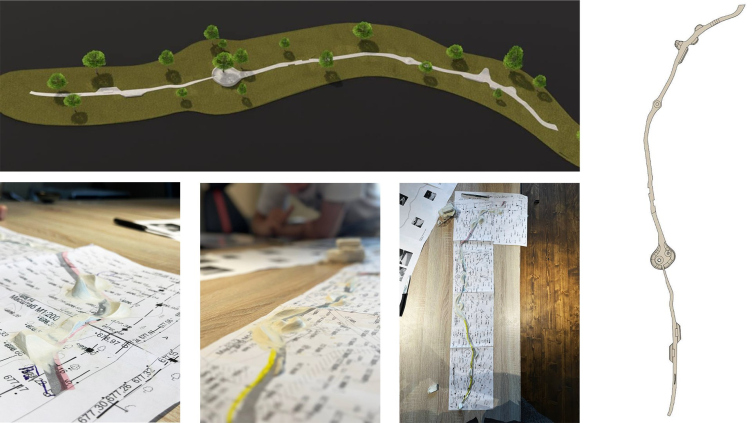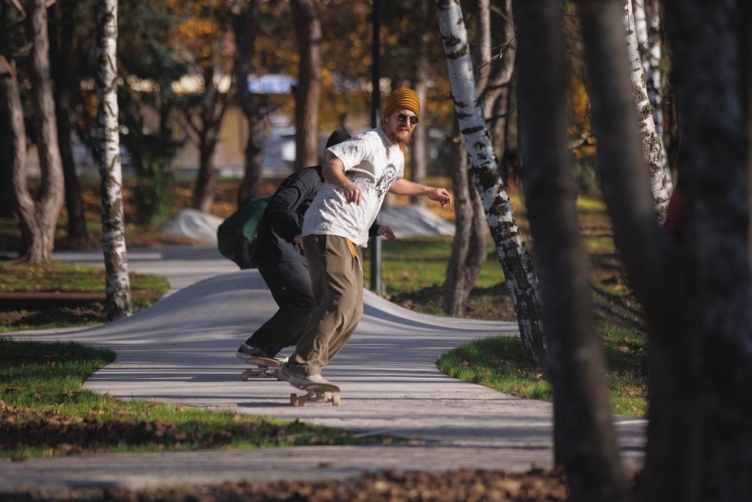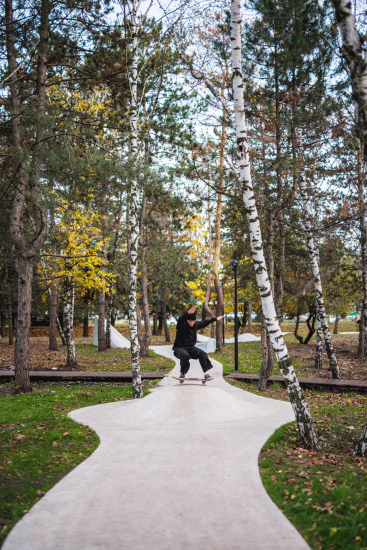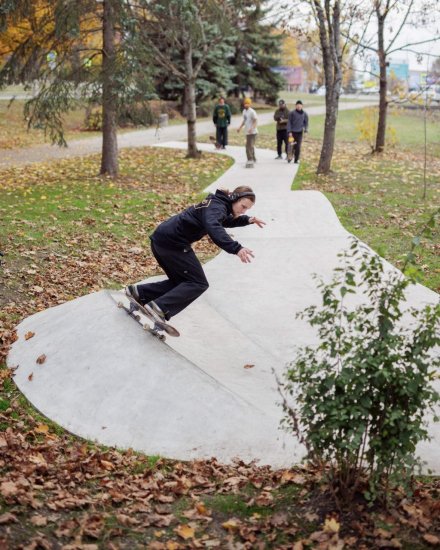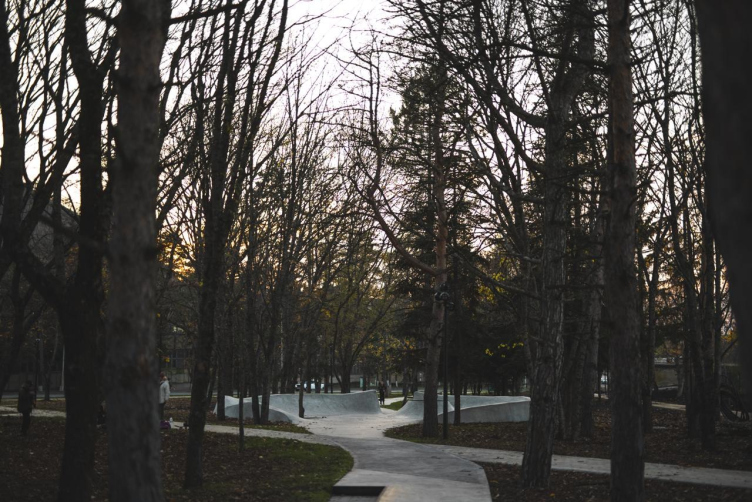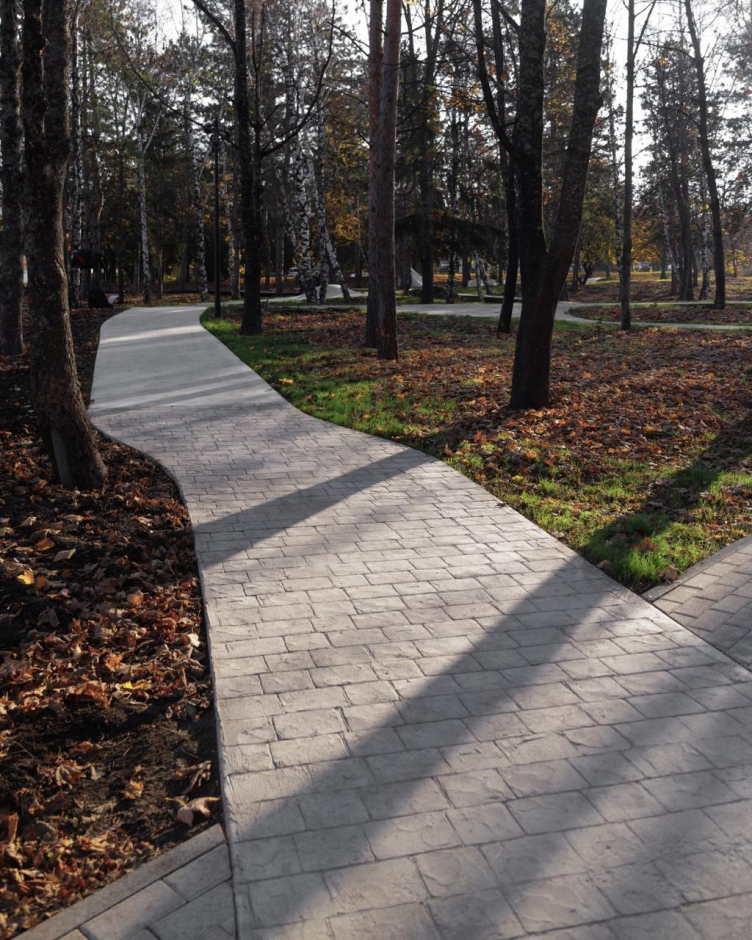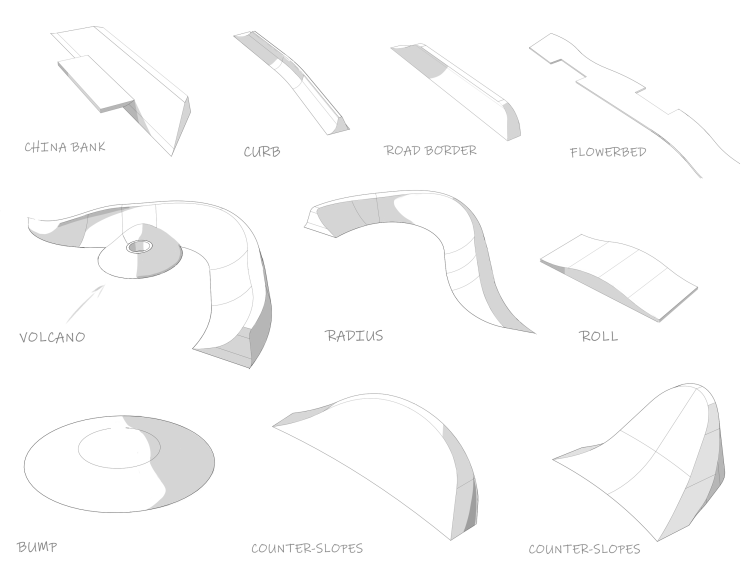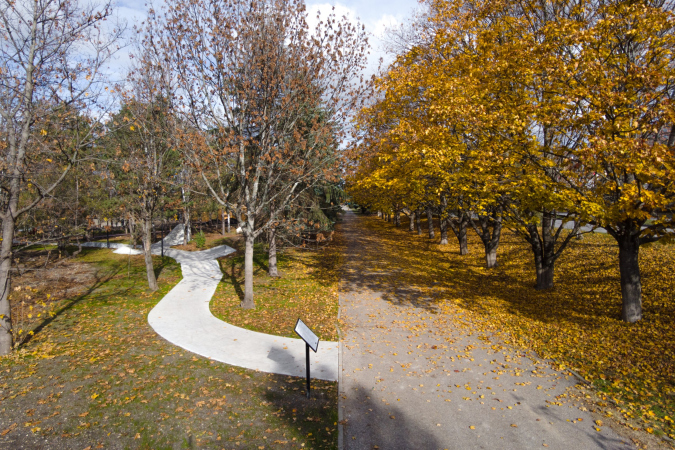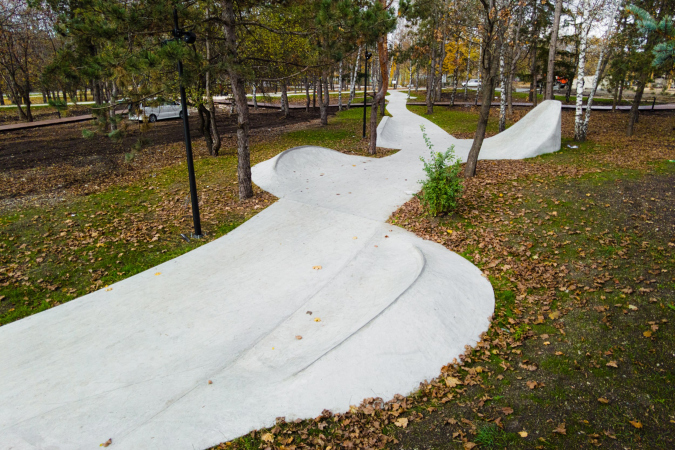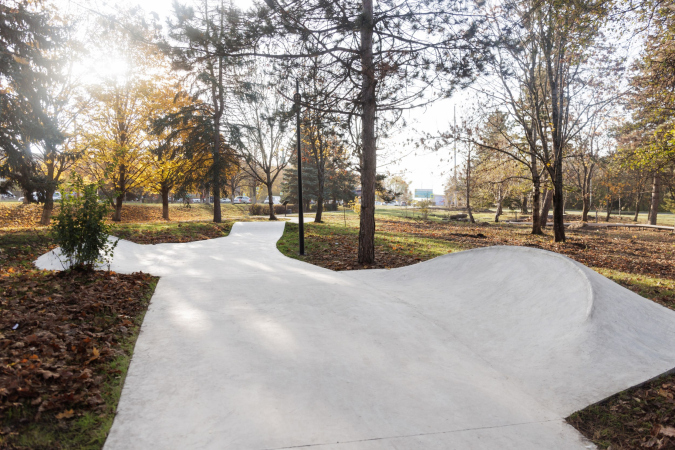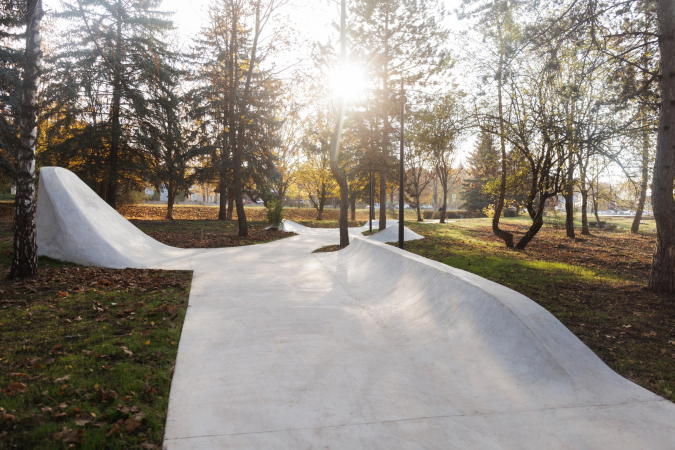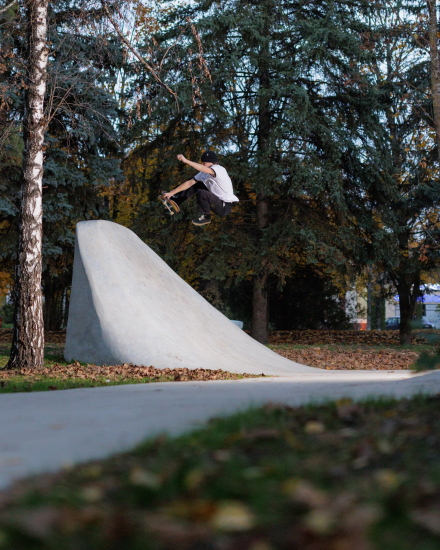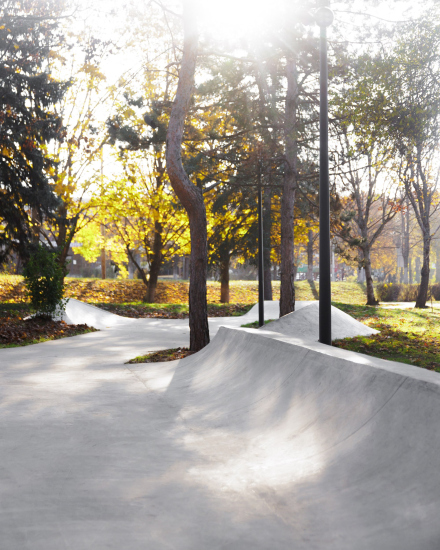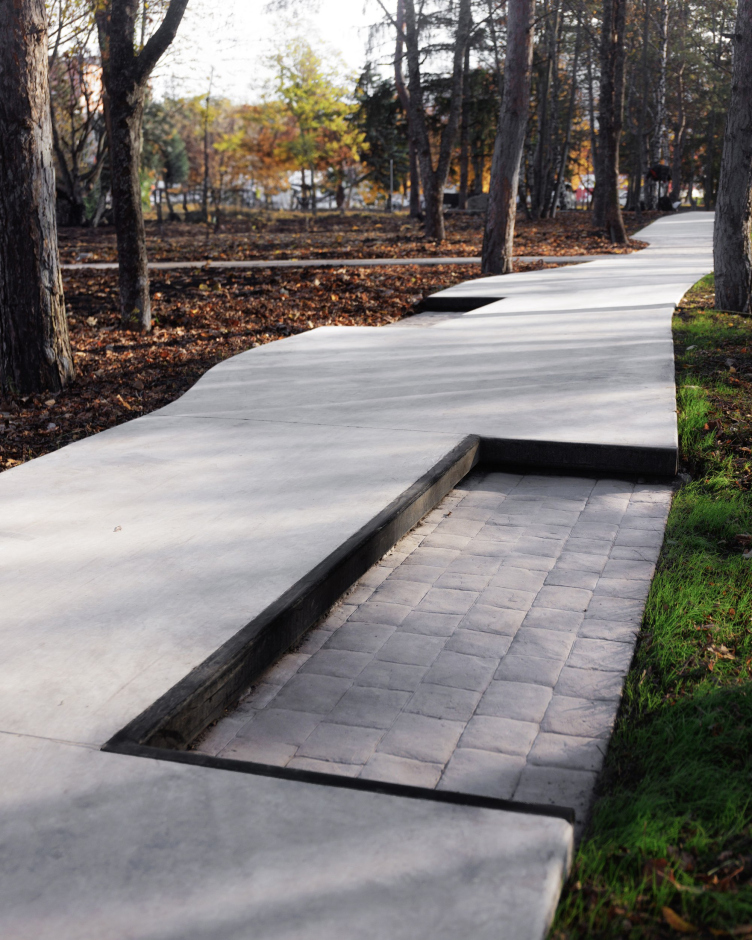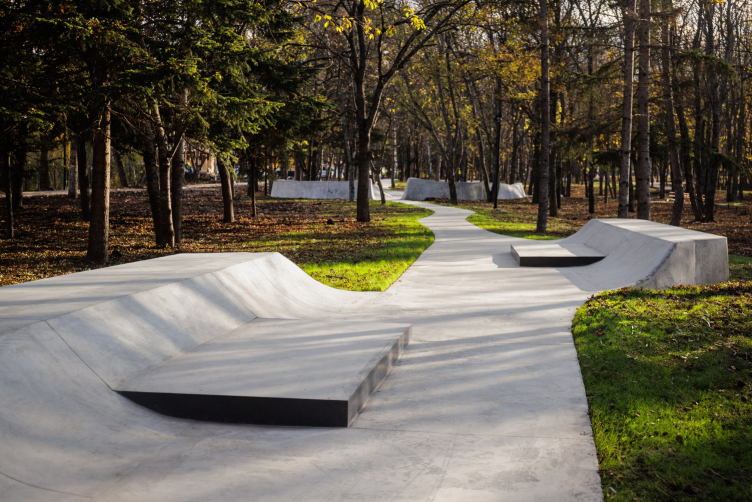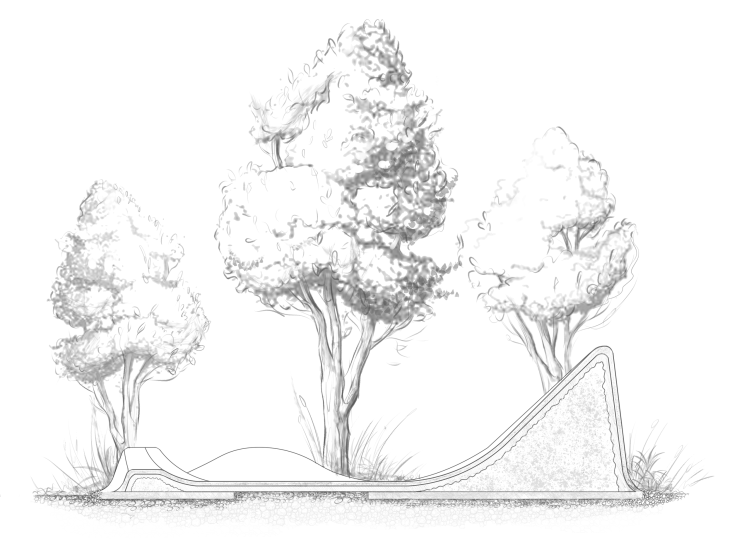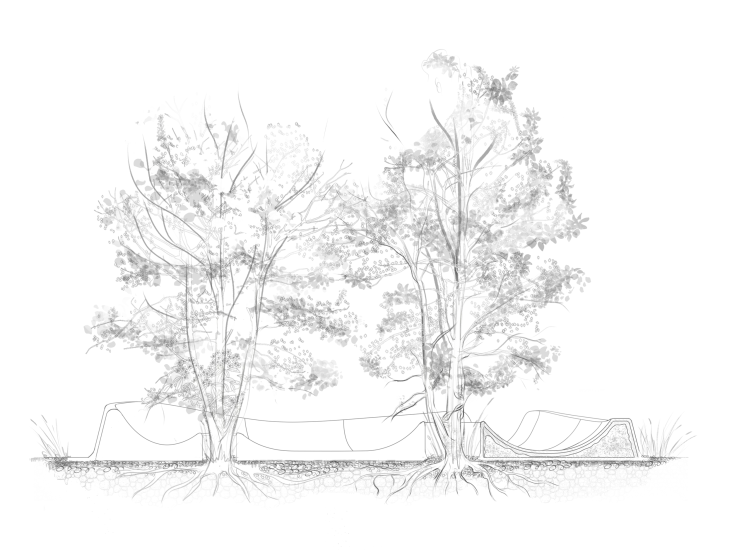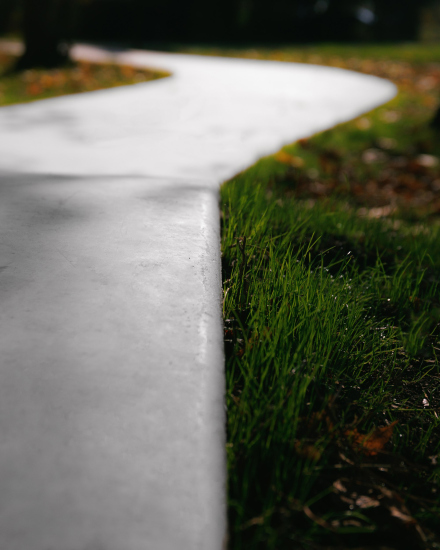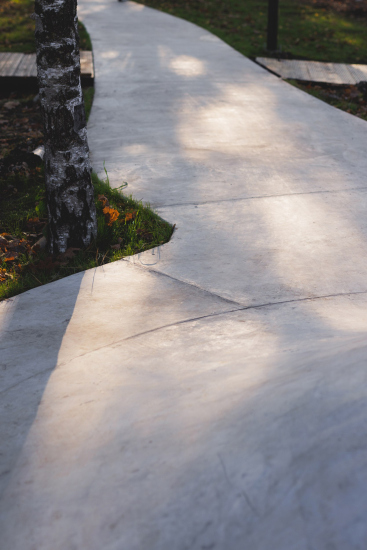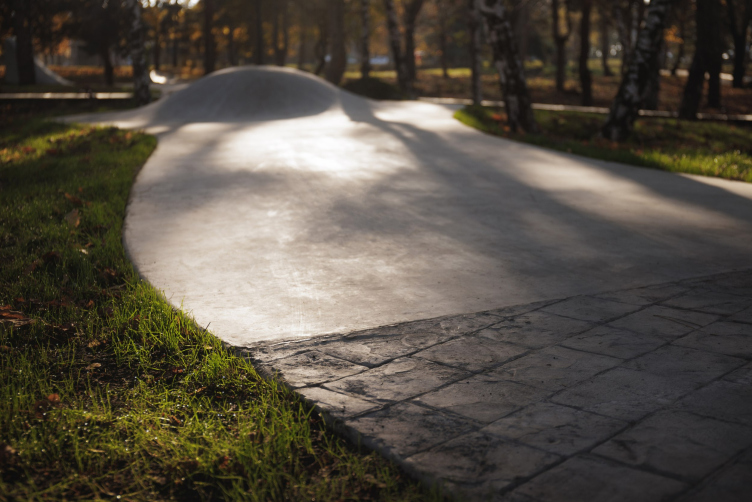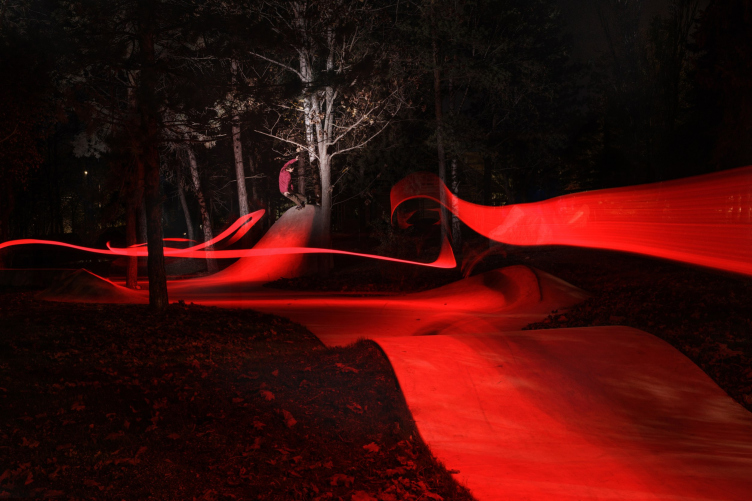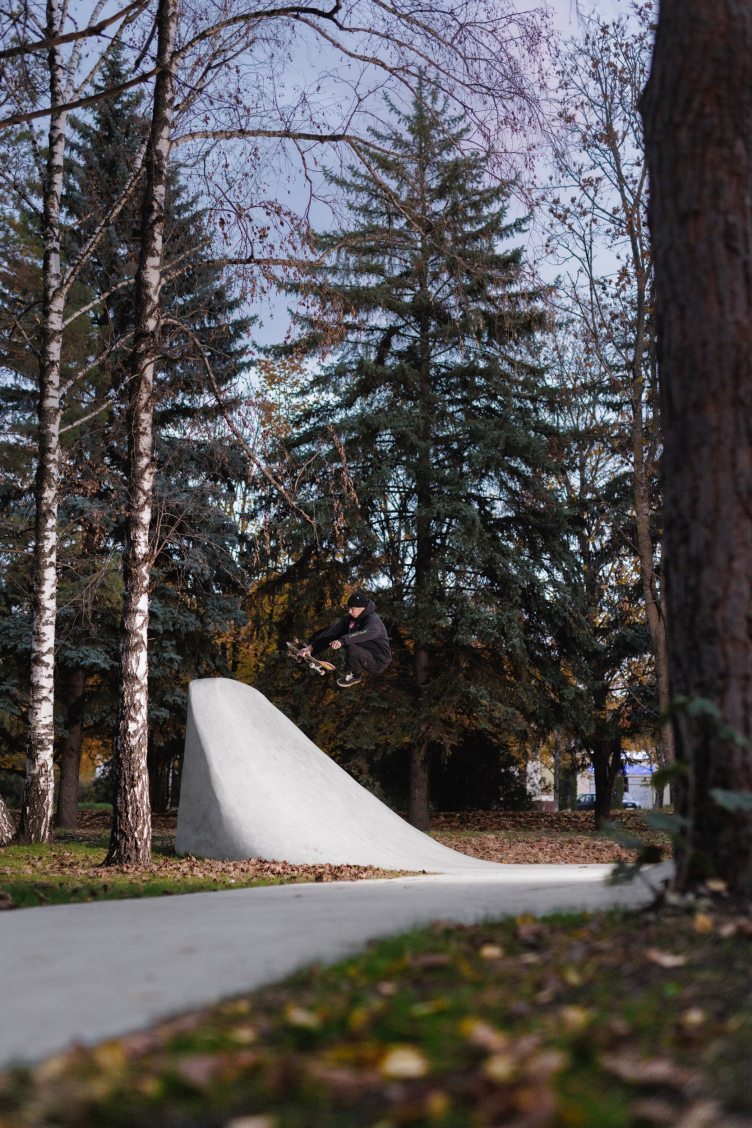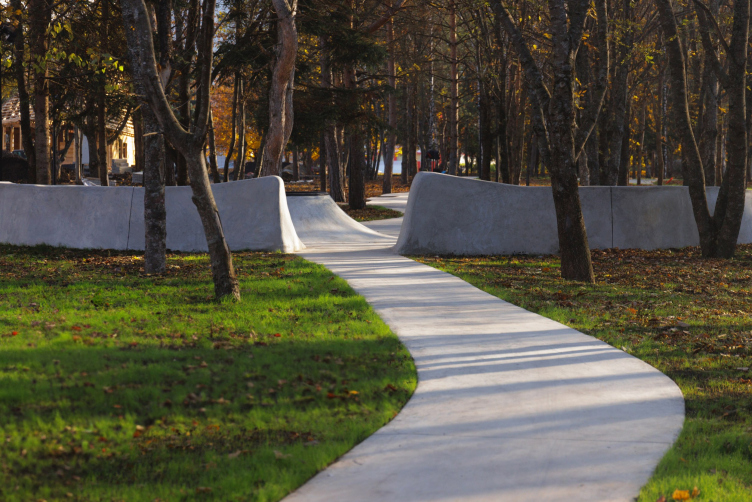Snake run “Lermontov”, sketches
The square is small – its triangular 2.5-hectare area lies at the foot of Mount Sheludivaya, bordered on the opposite side by a school, the city administration building, and – fun fact – a bit further away, the Beshtau sports complex, where Nigeria’s national football team trained back in 2018. The trees, both deciduous and coniferous, overshadow the low-rise Soviet buildings.
The XSA team had three main goals: to preserve the trees and maintain the woodland character of the area, to fit an exciting spot for skaters within a limited space, and to invigorate the otherwise sleepy town with an infusion of street culture. This led to the idea of a snake run – a concrete “trail” with features and obstacles that weaves between the trees, complementing the landscape and offering riders a unique experience.
The spot in Lermontov is a true example of skate urbanism within the concept of sustainable development. We carefully integrated the structure into the landscape, allowing the concrete path to blend seamlessly with nature and connect the trails. What was once an abandoned city park has become a prime destination. We hope that riders – both locals and visitors – will appreciate it and that the snake run will become a reason for skaters to travel to the Stavropol region.
The project is largely experimental: throughout the process, we wanted to explore new ways of embedding skateboarding into urban spaces and the additional benefits it could bring.
In everyday practice, skateboarding is more about the joy of movement than about work or theorizing. It is driven by genuine values rather than fleeting trends, favors action over passivity, direct participation over mere observation, and self-directed practice over imitation. All of these qualities are undoubtedly potential building blocks of the city of the future – though, unfortunately, one still unknown to us.
The project is largely experimental: throughout the process, we wanted to explore new ways of embedding skateboarding into urban spaces and the additional benefits it could bring.
In everyday practice, skateboarding is more about the joy of movement than about work or theorizing. It is driven by genuine values rather than fleeting trends, favors action over passivity, direct participation over mere observation, and self-directed practice over imitation. All of these qualities are undoubtedly potential building blocks of the city of the future – though, unfortunately, one still unknown to us.
A White Stream and the Poetry of Concrete
Fitting a conventionally rectangular skatepark into Molodezhny Park would have required cutting down trees – an option that none of the project’s stakeholders were willing to consider. Instead, XSA decided to “unroll” the trail like a coil, threading a “strand” between the trees and stringing islands of skate features along it. The initial model was sculpted from molding clay and then revised multiple times to ensure no greenery would be damaged during construction. In addition to its sustainability, this approach revealed several other significant advantages.
Snake run “Lermontov”. Modelling
The snake run stretches 250 meters – something unprecedented in Russia. Comparing it to other similar sports makes it easy to appreciate the joy of extended riding: those who have skated along a frozen river would never trade it for even the trendiest rink, and anyone who has skied down from the peaks of the Caucasus or the Alps will find the flatlands of Leningrad Oblast uninspiring. This format is particularly great for beginners – they can weave between the trees, gaining speed from the slopes with minimal pushing, without worrying about getting in anyone’s way. The track is wide enough for safe overtaking. The snake run is not a closed loop, which naturally encourages reasonable breaks in riding and ensures an even distribution of skaters.
Snake run “Lermontov”. Skater Stepan Krukhmalev
Concrete is usually seen as the opposite of the organic, living world. Yet in Lermontov, XSA has given it a natural quality – the winding track resembles a sunlit mountain stream with foaming rapids. From a distance, one might even mistake it for an exposed rock formation rather than a concrete surface. There’s a certain poetry in the way fallen leaves and shifting shadows settle on its hand-polished texture.
Snake run “Lermontov”
At the points where the track intersects pedestrian pathways, the surface transitions to stamped concrete – this slows down riders and signals, “Caution: pedestrians ahead”. Meanwhile, walkers can hear the subtle hum of wheels against the textured surface from afar. The park is open for skating both during the day and after sunset, with two lighting masts fitted with LED lamps illuminating the track and its features.
Snake run “Lermontov”
Eco Extreme
The first way to use the track is simply to ride it straight through. However, since XSA took inspiration from 1970s skateparks – where the key idea was that of dynamic movement – there’s also another approach: incorporating four feature islands along the way. These elements help beginners practice their first tricks while offering experienced riders room for creativity. Three of the sections imitate standard urban environments with objects popular among skaters: benches, road barriers, and flowerbeds. The central, curved section is slightly larger and serves as a more traditional bowl.
In this park, you can do whatever your heart desires – drop down, ride up, slide along the edges, or jump across as if leaping from one sidewalk to another. Riders are limited only by their imagination. It’s best to ride from top to bottom, but it’s not a strict rule – you can move in either direction.
“Cheat sheet” with names of shapes
The snake run begins with a straight roll-in that helps riders gain speed. Next come two symmetrical counter-slopes with concrete copings, a massive two-meter China bank, and a long concrete quarterpipe (aka road barrier). Beneath the shade of birch trees, a sharp, high-amplitude round roll follows – a spot, as the designers say, where riders can “snap their tricks”.
The next feature is an original element named “Flowerbed” by XSA: two symmetrical dips in the track resembling a planter without soil. Here, riders can grind along the edge, tilting their board downward, or clear the gap with a straightforward jump.
Snake run “Lermontov”. The “Flowerbed” spot
The central curved island is shaped like a drained fountain – an image that feels fitting in the slightly wild setting of the park and the mineral spring resorts of the Caucasus. The trees within it are shielded by raised “craters”, which also serve as extra riding surfaces with varied difficulty.
The final element is a three-meter-long curb, resembling an ordinary street edge. But here, riders don’t have to pop onto it – they can simply roll up, making it an easy and inviting spot for beginners to practice balance and grinds.
Snake run “Lermontov”. The “China Banks” spot
From Concept to Finishing Touches
XSA doesn’t just design their parks – they build them with their own hands. Their deep understanding of concrete formulas and finishing techniques ensures that their structures remain durable and visually appealing, resistant to wheels, moisture, and erosion.
Each figure is built on a compacted gravel base. The shapes take form through a gradual layering of inert material, which is then manually sculpted to precise dimensions. Once the contours are set, the team installs guide posts and lays down a rebar framework before pouring the concrete. The final stage involves carefully shaping and smoothing the surfaces through a multi-step finishing process. This hands-on approach gives the material a warmer, more organic feel, while the seamless transition between concrete and grass avoids any visual or spatial dissonance.
Snake run “Lermontov”. The “Bump” figure
The concrete snake run in Lermontov’s park dispels several stereotypes about extreme sports spaces. It proves that skate spots don’t have to be confined beneath overpasses or at the city’s outskirts – they can blend harmoniously into a poetic park setting. Concrete, in the right hands, can resonate with the landscape, and a skatepark doesn’t have to be boxed into a rigid rectangle. Finally, as with many well-designed urban spaces, the project has fostered an unexpected but valuable social effect: the park has become a gathering place for a diverse mix of people, from parents with children to athletes and photographers.
Snake run “Lermontov”. Mark Olshovsky is performing a front rock
Snake run “Lermontov”, Andrey Mikhailov is performing a Frontside Boneless
Snake run “Lermontov”


